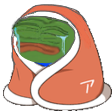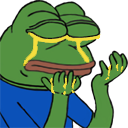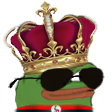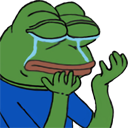Chapter 1449: Chapter 1079: Funding is Not an Issue_2 Chapter 1449: Chapter 1079: Funding is Not an Issue_2 And Lu Xiaolu’s Tumor Laboratory, which originally only undertook the K virus treatment project, is now leading both K virus and NK cell therapies. One team simultaneously straddles two top world-class subjects; what are they excited about if not this.
The Stem Cell Laboratory is now not only undertaking the NK cell therapy project but has also been upgraded to a Cell Therapy Laboratory, with its research scope expanding by several folds. Following that, staff, funding, and laboratory space will also increase multiple times over. It is estimated that Tang Shun’s team will wake up laughing from their dreams day and night.
The researchers in several laboratories, following a major boss like Yang Ping, have projects, funding, and equipment all in abundance–and not just that, but in large, satisfying quantities. Which one of them isn’t happy, which one isn’t excited? In the past, applying for a project would leave one nearly hairless with stress, and even then, the funding would be tight, with no guarantee of achieving results. Now, top world-class projects come as though picking them out of one’s pocket, announcing results yields success, and they even have their own journals for publications. Such research conditions are unfindable anywhere else in the world, even with a lantern.
The path of this project is getting wider as they go. Yang Ping now has a clear idea of the project strategy, aiming to build a project system centered on the K factor, which as a cytokine is very special and was previously undiscovered in the human body. It was only found during the culture of Sisi’s tumor cells.
This discovery process itself is also worth reflecting upon; perhaps it could be used to research a method for creating or discovering new cytokines.
The mysteries of the human body are infinite, and true understanding in current biomedical science remains but a small portion, with much of the unknown territory still vast; this arouses great curiosity in Yang Ping.
The K factor was an accidental discovery by Yang Ping, an unintended yield. At the time, while analyzing the composition of the culture medium for Sisi’s tumor cells in vitro, results revealed some protein molecules not present in the original medium. This large protein molecule is the K factor, which later caused many tumor cells to die on their own. Upon analysis, it was found that it was this K factor that initiated the apoptotic program in tumor cells, a discovery perfectly in line with the wisdom that “within five steps lies the cure.”
Yang Ping decided to take the discovery process of the K factor as a project focus, questioning why this kind of K factor appears when tumor cells are cultured in vitro. If the mystery can be unraveled, it will open a new gateway to a whole new world.
—
Integrating the K factor into NK cells falls under the realm of genetic engineering, and so Yang Ping passed this task to the Genetics Laboratory at Nandu Medical University; they possess a high level of gene recombinant technology. Yang Ping’s projects have propelled the entire Nandu Medical University laboratories to enter the sphere of top international academic standards.
The structure of the K factor is very unusual. Genetic sequence analysis shows that it is a complex, containing antigen receptor structures, cytokine structures, and protein molecular structures suitable for ‘Cell Armor’. The antigen receptors are responsible for recognizing tumor cells, and the special cytokines are in charge of initiating tumor cell apoptosis. They contain molecules similar to Perforin and granzyme, but the efficacy is many times that of Perforin and granzyme, so it can function both outside and inside the cells.
Yang Ping wondered if, during the culturing of tumor cells, immune cells and various immune factors were mixed into the samples, and if they underwent some kind of combination in the special culture environment to form the current K factor.
If so, Yang Ping developed a new train of thought: could the K factor be broken down? The antigen receptor could be embedded into the NK cells’ surface responsible for recognizing tumor cells. The factors capable of killing tumor cells could be embedded into granzyme and Perforin so they could be released and penetrate tumor cells. Protein molecules with the effects of ‘Cell Armor’ could also be embedded on the cell surface.
Yang Ping felt that this would only be effective, otherwise if everything were embedded on the cell surface, it would be ineffective — the factors capable of killing tumor cells wouldn’t be released, and NK cells with just ‘Cell Armor’ and antigen receptors would be significantly weakened in combat ability.
Such NK cells are theoretically perfect. Guided by the antigen receptors, the factors able to kill tumor cells would penetrate and enter the interior of the tumor cells, accomplishing the mission of hunting down tumor cells.
Yang Ping encountered a very interesting phenomenon: the combination of K factor with NK cells was so perfect that they easily overcame many of the difficulties currently faced by NK cell therapy. The K factor seemed tailor-made to match NK cells.
Wang Ping nearly used over 100 drawings, imagining more than 100 possible combinations, then employed his Optimal Selection Method to categorize these combinations into different levels.
In the afternoon, Yang Ping came personally to the Genetics Laboratory with these images to discuss with Lin Lan, who is Su Nanchen’s wife and also Yang Ping’s sister-in-law, an excellent genetics scholar who once studied in the United States. Nandu Medical University recruited her with an annual salary of two million, and at 28, she was already a Doctoral Student Mentor, an extremely capable genetics scientist.
Yang Ping conveyed his ideas to Lin Lan, then handed over the experimental plan to her. Lin Lan was very surprised after reading it; this experiment was a huge project involving gene recombination, cell culture, structural verification, and so forth. The entire research process would incur astronomical costs–estimating to consume Nandu Medical University’s whole-year research budget.
If you find any errors ( broken links, non-standard content, etc.. ), Please let us know via our discord so we can fix it as soon as possible.
















































